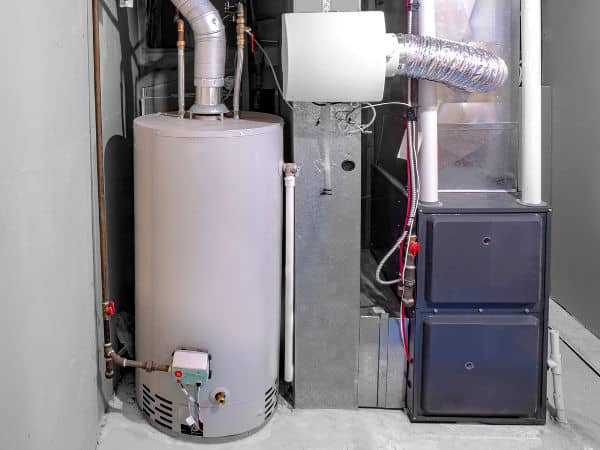The content underneath relating to Tips on Maintaining a Water Heater is totally attention-grabbing. Read it yourself and figure out what you think of it.

Hot water is necessary for day-to-day comfort, whether it's for a revitalizing shower or cleaning dishes. To guarantee your hot water system runs successfully and lasts longer, normal maintenance is vital. This post provides useful tips and insights on how to preserve your home's warm water system to prevent disturbances and costly repair services.
Introduction
Keeping your home's hot water system may appear challenging, however with a couple of easy actions, you can guarantee it runs smoothly for several years to find. This guide covers everything from recognizing your warm water system to do it yourself maintenance suggestions and recognizing when to hire expert help.
Significance of Maintaining Your Warm Water System
Regular maintenance not just expands the lifespan of your hot water system however also ensures it runs successfully. Overlooking upkeep can cause reduced performance, greater power bills, and even premature failing of the system.
Indicators Your Hot Water System Requirements Maintenance
Understanding when your warm water system requires focus can prevent major problems. Keep an eye out for indicators such as irregular water temperature, strange noises from the heater, or rustic water.
Recognizing Your Hot Water System
Before diving into maintenance tasks, it's useful to comprehend the standard parts of your warm water system. Commonly, this consists of the hot water heater itself, pipelines, anode poles, and temperature level controls.
Month-to-month Upkeep Tasks
Normal month-to-month checks can assist capture minor problems prior to they rise.
Purging the Hot Water Heater
Flushing your water heater removes sediment build-up, improving performance and lengthening its life.
Monitoring and Changing Anode Rods
Anode rods avoid corrosion inside the container. Inspecting and changing them when broken is vital.
Checking and Changing Temperature Setups
Adjusting the temperature setups makes certain ideal performance and safety.
Do It Yourself Tips for Upkeep
You can carry out several upkeep jobs yourself to maintain your warm water system in top problem.
Checking for Leakages
Consistently check pipes and links for leaks, as these can bring about water damages and higher bills.
Examining Pressure Alleviation Valves
Testing the stress relief valve guarantees it works correctly and stops excessive stress buildup.
Shielding Pipelines
Protecting warm water pipes decreases warm loss and can save power.
When to Call an Expert
While DIY upkeep is helpful, some problems call for expert proficiency.
Facility Issues Requiring Expert Help
Examples consist of major leakages, electrical issues, or if your water heater is continually underperforming.
Routine Specialist Maintenance Advantages
Specialist maintenance can consist of extensive inspections, tune-ups, and making sure conformity with safety requirements.
Verdict
Routine upkeep of your home's hot water system is necessary for efficiency, durability, and expense financial savings. By following these ideas and knowing when to look for specialist aid, you can ensure a trustworthy supply of warm water without unanticipated disruptions.
How to Maintain an Instant Hot Water Heater
Before tinkering with your hot water heater, make sure that it’s not powered on. You also have to turn off the main circuit breaker and shut off the main gas line to prevent accidents. Also turn off the water valves connected to your unit to prevent water from flowing into and out of the appliance. 2. When you’re done, you have to detach the purge valves’ caps. These look like the letter “T” and are situated on either side of the water valves. Doing so will release any pressure that has accumulated inside the valves while at the same time avoid hot water from shooting out and burning your skin. 3. When the purge valves’ caps are removed, you have to connect your hosing lines to the valves. Your unit should have come with three hoses but if it didn’t, you can purchase these things from any hardware or home repair shops. You can also get them from retail stores that sell water heating systems. Read the user’s manual and follow it to complete this task properly. When the hosing lines are connected, open the purge port’s valves. 4. You should never use harsh chemical cleaners or solutions when cleaning your unit. Make use of white vinegar instead. It should be undiluted and you’ll probably use about 2 gallons. 5. Now flush your water heater. This task should probably take about 40 minutes. We can’t give you specific directions for this because the procedure is carried out depending on the type, model and brand of your heater. With that being said, refer to the user’s manual. 6. When you’re done draining the unit, you have to turn off the purge port valves again. Remove the hosing lines that you earlier installed on each of the water valves. Put the valve caps (purge port) back in their respective places and be very careful so as not to damage the rubber discs that are found inside these caps. 7. Now that everything’s back in place, check your user’s manual again to find out how to reactivate your water heating system. 8. Once it is working, turn one of your hot water faucets on just to let air pass through the heater’s water supply pipes. Leave the tap on until water flows smoothly out of it. https://www.orrplumbing.com/blog/2014/september/how-to-maintain-an-instant-hot-water-heater/

As a reader on What Kind of Maintenance Do Water Heaters Need?, I was thinking sharing that piece of content was sensible. For those who liked our blog post kindly make sure you remember to pass it around. Bless you for being here. Revisit us soon.
Call Today